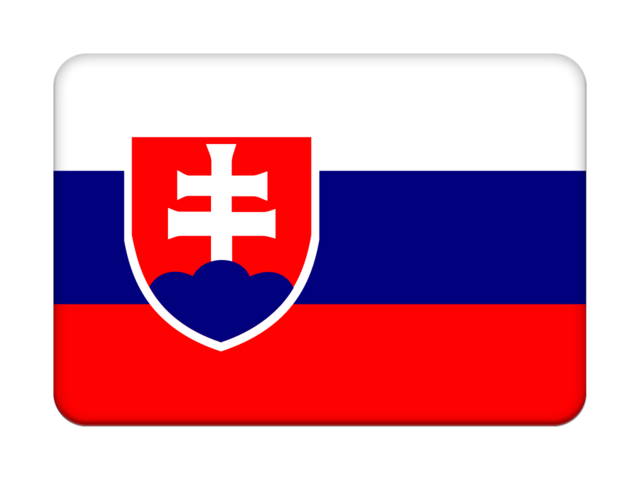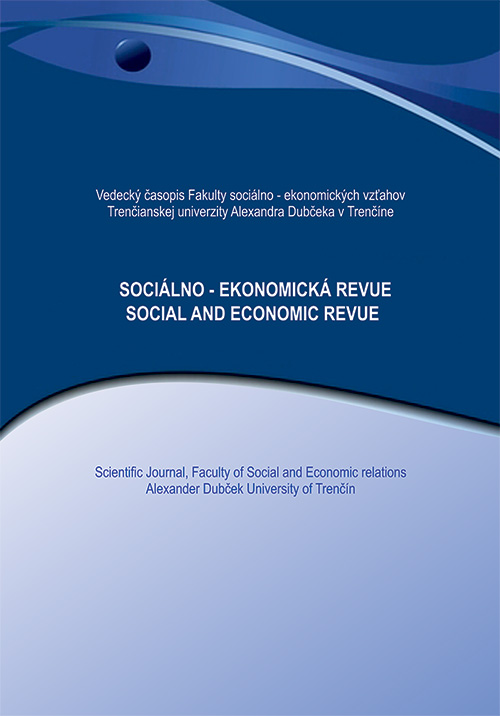THE IMPORTANCE AND IMPLEMENTATION OF INFORMATION AND COMMUNICATION TECHNOLOGIES
The aim of the article is to point out the need to introduce innovations, digitization and new advanced technologies in the so quickly developed enterprises. We want to define the assess the use of information and communication technologies in the Slovak industrial sector, as well as the implementation of ICT in production processes. This trend has the huge impact on the development of enterprises, countries and ultimately the entire world economy. In the final
practise part of our paper, we implement our knowledges to Slovak industry and evaluate the level of their use. In this paper we have used a several scientific methods. Starting with collecting information, especially from scientific works from both, foreign and home authors, too. Subsequently, we have sorted them into individual chapters. From the scientific methods we used mainly paired methods as induction and deduction, analysis and synthesis. We used
graphical and mathematical methods, which are mainly used for the clearer presentation of our results in the chart.
Release: 2022/1 Pages: 12-25 JEL classification: D47, L22, L51, M15, M21
DOI: https://doi.org/10.52665/ser20220102
Keywords: Information and communication technologies, industry, Internet of Things, Big Data, digitalization, electronic communication, benefits
Section:
Contacts:
Ing. Alena Bašová, PhD
Department of Finance
Faculty of National Economy
University of Economics in Bratislava
Dolnozemská 1
852 35 Bratislava
alenkabaso@gmail.com
alena.basova@euba.sk
Literature:
Brem A., Viardot E. (2017). Revolution of Innovation Management: The Digital Breakthrough. s 1-16. ISBN 978-1-137-57475-6
GIlchrist, A.(2016)Industry 4.0: The Industrial Internet of Things. Berkley: Apress, 2016. s. 53-55. ISBN 978-1-4842-2046-7.
Feather, J. – Sturges, Paul. (2013)International Encyclopedia of Information and Library Science.2. vyd. Londýn: routledge, 2013. p. 28. ISBN 0-203-40330-4.
Rogers, M.: (1998) The definition and measurement of innovation. In: Melbourne Institute Working Paper. No. 10/98. Parkville: The University of Melbourne, 1998. 27 p. ISBN 0 7325 0973 4. Available at: https://melbourneinstitute.unimelb.edu.au/publications/working-papers/search/result?paper=2155929
Barnett, Homer Garner. (1953) Innovation: The basis of cultural change. New York: McGraw-Hill. 1953. 462 s. ISBN 0070037930.
O’Sullivan, D. – Dooley, L.: (2009) Applying Innovation. Thousand Oaks: SAGE Publications. 2009. 391s. ISBN 9781412954556.
Aiken M.: – Hage, J.: The Organic Organization and Innovation. In: Sociology, Vol. 5., No.1.71. 63-82 p. Available at: https://journals.sagepub.com/doi/10.1177/003803857100500105.
Kotsemir, M. – Abroskin, A. (2013)Innovation concepts and typology – An evolutionary discussion national Research University Higher School of Economics. 2013. 50 p.. Available at: https://mpra.ub.uni-muenchen.de/45400/1/MPRA_paper_45069.pdf
Chesbrough, H. (20113) Open innovation: The new Imperative for Creating and Profiting from Technology. Boston: Harvard Business School Press. 2003. 227 s. ISBN 978-1578518371.
More Ch. (2000)- Understanding the Industrial Revolution. London: Routledge, 2000. 208 s. ISBN 9780203136973
Katz, R., Koutroumpis, P. And Callorda, F. M. (2014).Using a digitization index to measure the economic and social impact of digital agendas. s. 32-44. ISSN 1463-6697
Tauss, A.: (2012) Post-fordism, neoliberal restructuring and financialization. In Colombia Internacional, (2012). p.. 3 - 57. Available at:https://revistas.uniandes.edu.co/doi/pdf/10.7440/colombiaint76.2012.03
Brynjolfsson. E., Mcafee A.( 2014). The Second Machine Age: Work, Progress, and Prosperity in a Time of Brilliant Technologies. New York: W. W. Norton & Company, 2014. 306 p. ISBN 9780393239355
Popjaková, D. A Mintálová, T.(2019) Priemysel 4.0, čo mu predchádzalo a čo ho charakterizuje-geografické súvislosti. In Acta Geographica Universitatis Comenianae. Banská Bystrica: FPV UMB, 2019. č. 2. p. 176-183.Available at: : http://actageographica.sk/stiahnutie/63_2_03_Popjakova_Mintalova.pdf
Machinemetrics Industry 4.0 Advantages and disadvantages. Available at: https://www.machinemetrics.com/blog/industry-4-0-advantages-and-disadvantages
O´Brien, James – Marakas, George. (2011)Management Information Systems. 10. vyd. New York: McGraw-Hill, 2011. s. 423. ISBN 978-0-07-337681-3.
Luenendonk, M. Industry 4.0: Definition, Design Principles, Challenges, and the Future of Employment. Available at: <https://www.cleverism.com/industry-4-0/>
Davenport, Thomas – Barth, Paul – Bean, Randy.(2012) How ,,Big Data“ is different. In MIT SLOAN Management Review, 2012. p. 22-23. Available at: https://www. bs.edu/ris/Publication%20Files/SMR-How-Big-Data-Is-Different_7d61f-8e5f-4b1e-b79f-83f33c903455.pdf
Hofmann, Martin – Neukart, Florian – BACK, Thomas.(2017) Artificial Intelligence and Data Science in the Automotive Industry, 2017. s. 1-3. Available at:https://arxiv.org/ftp/arxiv/papers/1709/1709.01989.pdf
Vaculík, J.(2018) Veci, Siete, Dáta A Ich Uloženie. Žilina: Edis, 2018. S. 198 - 200. ISBN 978-80-554-1521-5.
Techtarget. Cloud computing https://www.techtarget.com/searchcloudcomputing/definition/cloud-computing
Thames, Lane A Schaefer, Dirk.:(2017). Cybersecurity for industry 4.0. Springer, 2017. p. 180-181. ISBN 978-3-319-50660-9.
Levický, D.:(2020) Základy kybernetickej bezpečnosti. Košice: Elfa, s. r. o., 2020. p. 23-24. ISBN 978-80-8086-280-0.
Rüssmann, M., Lorenz, M., Gerbert, P., Waldner, M., Engel, P., Harnisch, M. And Justus, J. (2015). Industry 4.0: The Future of Productivity and Growth in Manufacturing Industries <https://www.bcg.com/publications/2015/engineered_products_project_business_industry_4_future_productivity_growth_manufacturing_industries#chapter1> Boston Consulting Group, 2014.
Rusiňáková, B.: (2022) Digitalizácia môže zvýšiť HDP Slovenska o 16 miliárd EUR, Available at: https://dennikn.sk/blog/1323548/digitalizacia-moze-zvysit-hdp-slovenska-o-16-miliard-eur/
info@economy.gov.sk (2018) Slovensko má po rokoch ucelenú Stratégiu hospodárskej politiky. Odbor komunikácie Available at: https://www.mhsr.sk/press/slovensko-ma-po-rokoch-ucelenu-strategiu-hospodarskej-politiky
Demir, K , G Döven,G B Sezen,B.:(2019) Procedia computer science. Available at : https://scholar.google.sk/scholar?q=Industry+5.0+and+human+robot+co+Working&hl=sk&as_sdt=&as_vis=1&oi=scholart
European Commission (2015). A Digital Single Market Strategy for Europe. Available at: https://eur-lex.europa.eu/legal-content/EN/TXT/?uri=celex%3A52015DC0192


